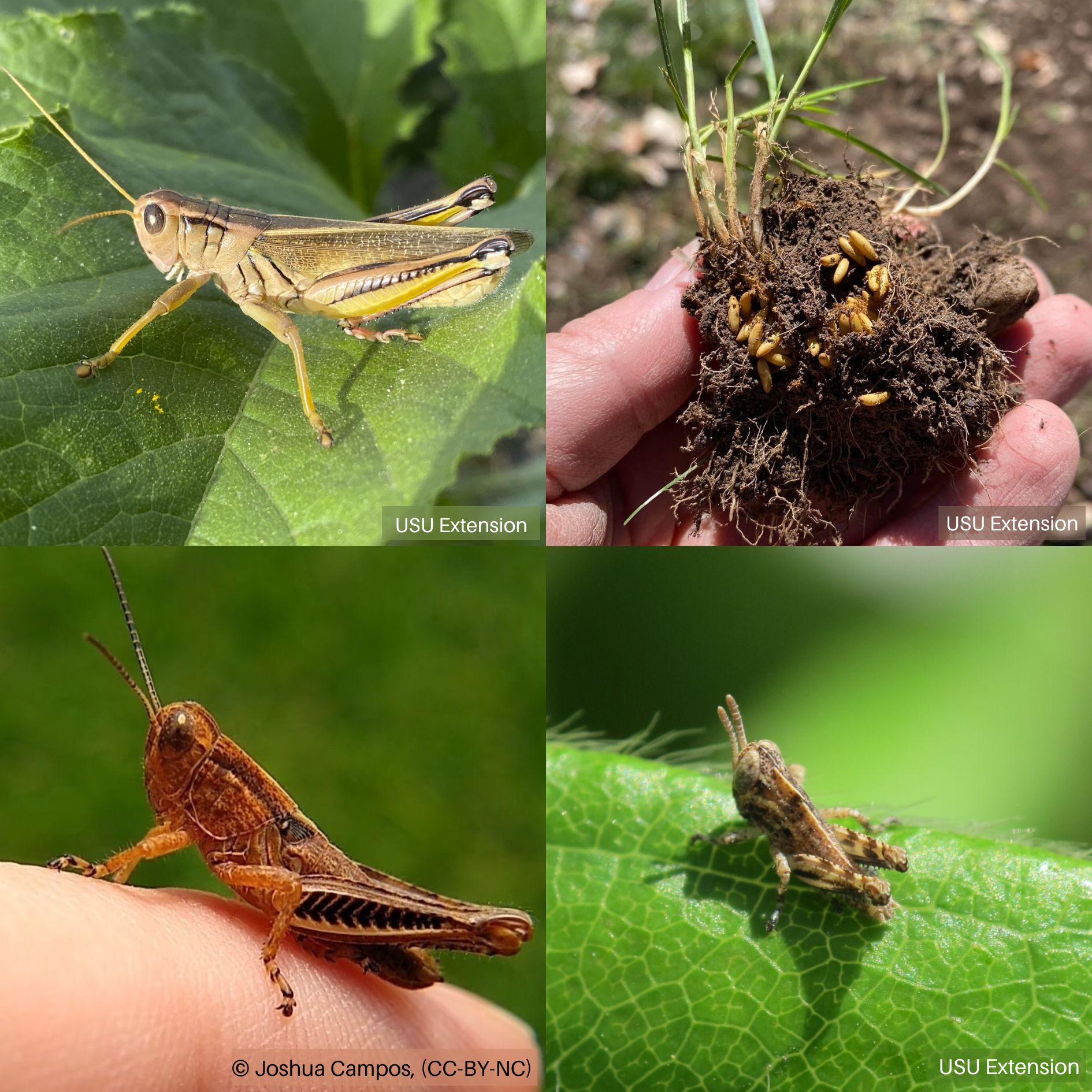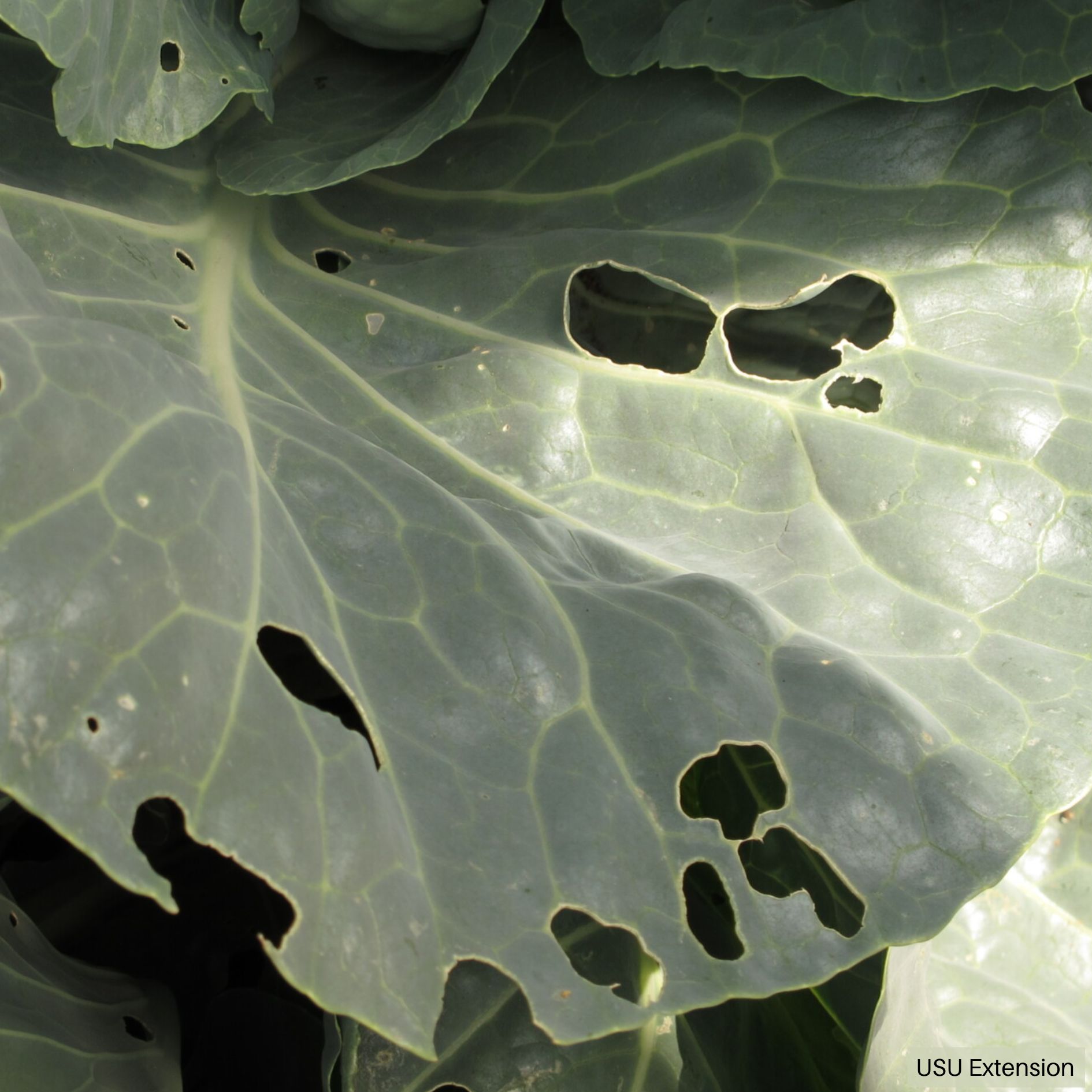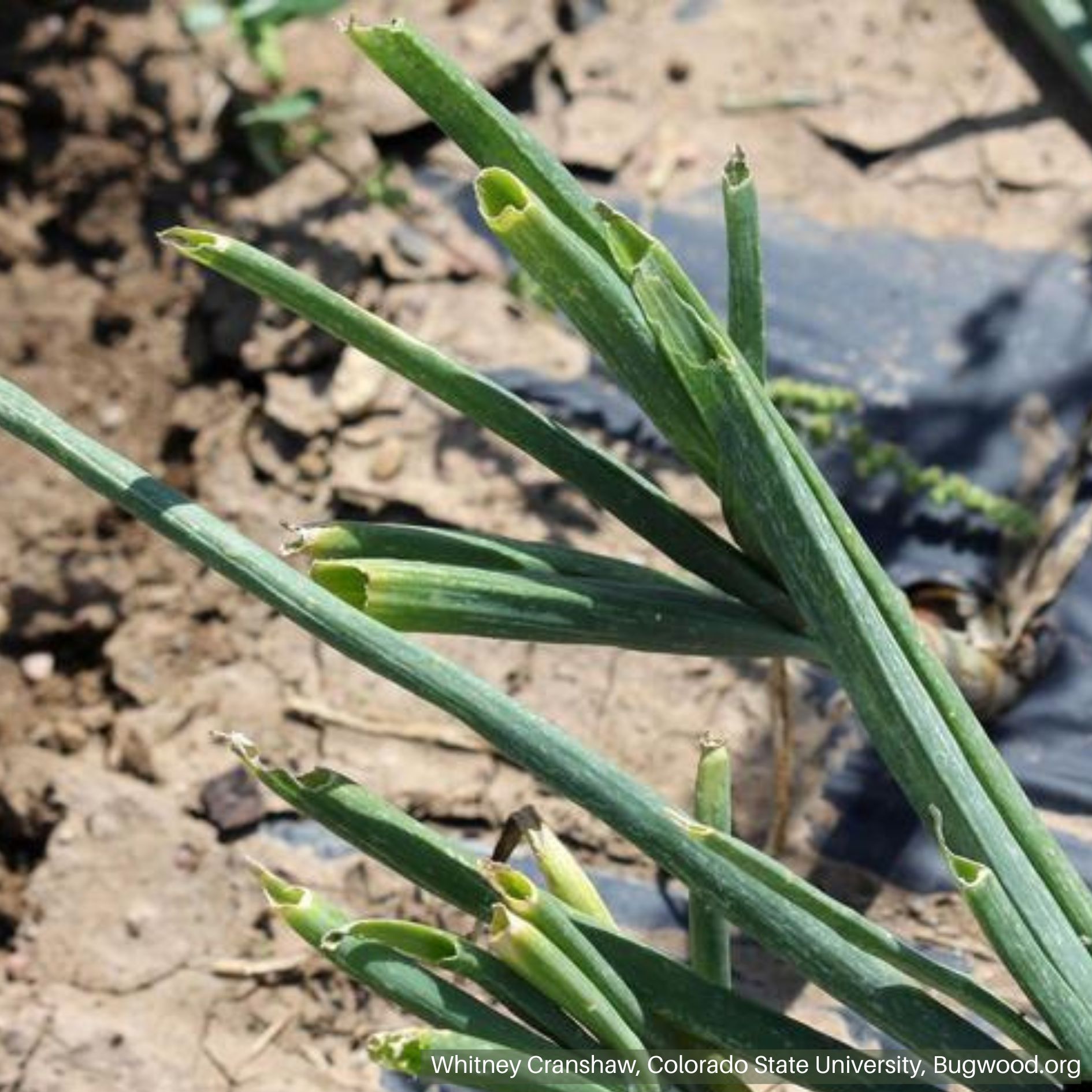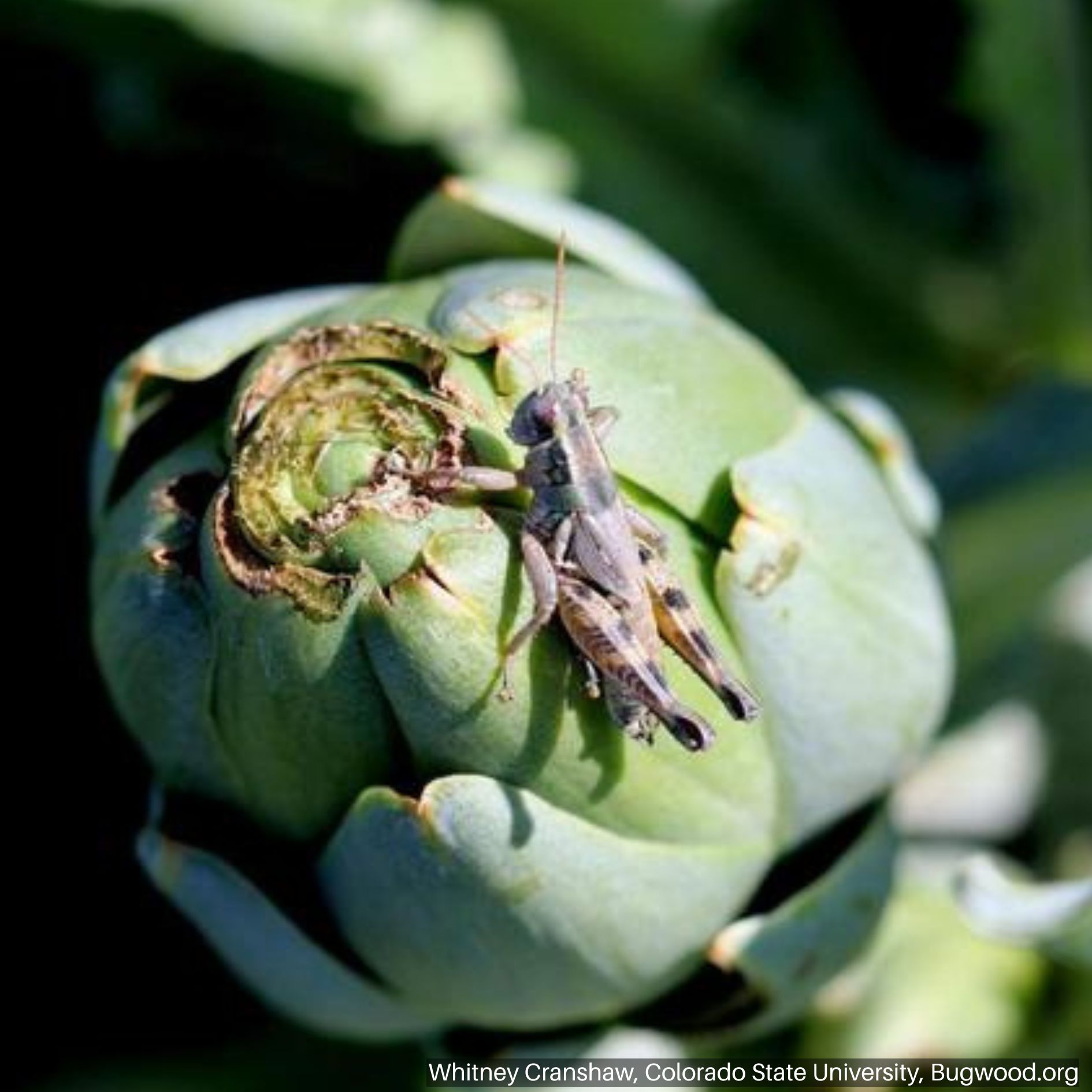Grasshoppers
 Grasshopper Life Stages
Grasshopper Life Stages Typical Grasshopper Feeding Damage
Typical Grasshopper Feeding Damage Grasshopper Feeding Damage on Onions
Grasshopper Feeding Damage on Onions Grasshopper Feeding on an Artichoke
Grasshopper Feeding on an ArtichokeHOSTS
- Artichoke
- Brassicas
- Corn
- Cucurbits
- Hemp
- Leafy Greens
- Legumes
- Onion
- Potato
- Rangeland Grasses
- Root Crops
- Solanaceae Crops
- Wheat & Barley
DESCRIPTION
Grasshoppers belong in the order Orthoptera and family Acrididae, and are most closely related to crickets and katydids. The acridid grasshoppers include some of the most injurious species in Orthoptera. Utah has three major groups of grasshoppers: the slant-faced grasshoppers, the band-winged grasshoppers, and the spur-throated grasshoppers. The slant-faces, as their name implies, generally have angled faces and long, thin bodies that enable them to blend into the grassy vegetation. The banded-wings are the conspicuous hoppers with often brightly colored hindwings that snap and crackle as they fly short distances. The banded-wings are especially common in open desert and scrub; they blend in well with their brown surroundings. The spur-throats include the most injurious species. Their name derives from the tubercle projecting between their front legs.
BIOLOGY
Grasshopper densities are primarily influenced by weather, and benefit from warm, dry springs. High temperatures allow eggs to hatch early and nymphs to grow quickly. Warm summers also promote egg deposition for the following year. Grasshoppers go through five nymph stages before becoming adults. Overwintering egg pods are freeze-tolerant, especially when there is sufficient snow cover for insulation.
Weather may affect grasshoppers both directly and indirectly. Cool wet weather may be detrimental to “cold-blooded” grasshoppers simply because it slows their movement. Weather may indirectly affect the natural enemies of grasshoppers, including predators and parasites.
SYMPTOMS
Grasshoppers have chewing mouthparts that tear away plant tissue. Injury is most often associated with rangeland, corn, small grains, and vegetable crops. However, during heavy infestations almost any type of plant may be attacked, including trees, shrubs, ornamentals, flowers, and turfgrass. Grasshoppers are commonly thought of as foliage feeders, but will also feed on flowers, fruits, seed heads, stems, and essentially all above ground plant parts.
GENERAL MANAGEMENT
- Springtime, while grasshoppers are still nymphs, is the best time for communities or neighborhoods to work together to suppress grasshopper populations. Treating as wide an area as possible is the key to success.
- Nosema locustae, sold as Nolo Bait, is a microsporidian protozoa that infects grasshoppers through baiting. Under ideal conditions coinciding with peak nymphal emergence, N. locustae will kill 50-70% of the population and 35-50% of the surviving grasshoppers will be infected. Infected grasshoppers are weakened, feed less, and produce fewer eggs.
- Many other natural occurring enemies for grasshoppers in Utah do exist. Likely, a combination of predators, parasites and pathogens contribute to grasshopper control every year.
- Some county weed offices will provide sprayers to use for free, but the applicator must purchase the insecticide.
- USDA-APHIS is responsible for control programs against grasshoppers on public lands. When grasshoppers occur at high numbers, owners may join together to receive state and federal aid in planning and conducting a Cooperative Rangeland Grasshopper Management Program.
INSECTICIDES
- When grasshoppers become adults, they can travel great distances and may not remain in one area long enough for an insecticide to be effective.
- There are over 500 products registered in Utah for grasshopper control. Click here for examples.

